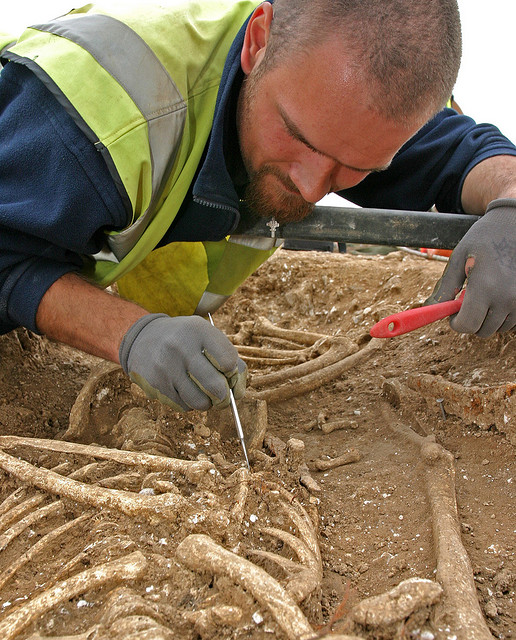READ: Forensic Anthropology
Determining Time and Cause of Death
Time Since Death
Estimating the time since death can be somewhat difficult with skeletal evidence. The placement of the bones when they are found can be an indication of how long a body has been in the area. As a body decomposed the remains will become more scattered as animals and insects carry off pieces of the body, or the bones. If the bones are further apart, it is more likely that the body has been there for a longer amount of time. Anthropologists can also look at the state of the bones, or if the bones are partially covered in dirt or vegetation. These can all be clues to how long a body has been there. Of course, all of these factors may be influence by whether or not the body was initially buried, wrapped in something, or just placed on the ground, so there is no foolproof way to estimate the time since death by using the skeleton.

Cause of death
Sometimes the bones can provide clues about how the person died. Bones may shows signs of certain diseases or infections. The bones may show evidence of damage such as, scrapes, a gunshot wound, or broken bones. If these signs are present, it can be very helpful in determining the cause of death, but in many cases there are no signs present on the bones, so it can be difficult to determine the cause of death using bones.